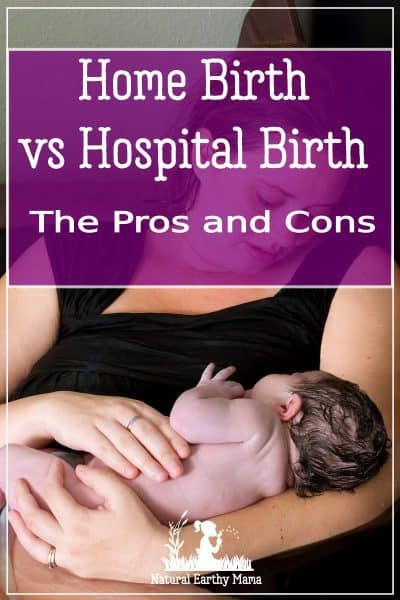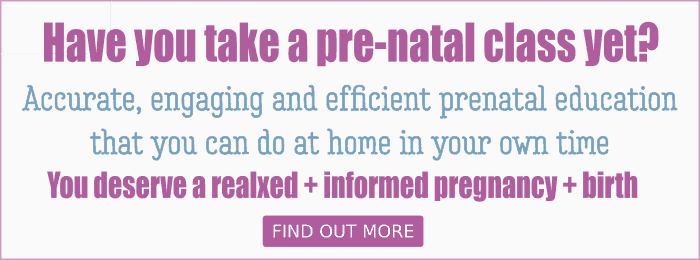
Choosing to at home is a decision that pregnant women do not take lightly. It is uncommon for women to choose to and so to choose to go against the cultural norm takes some thought, planning and a willingness to stick to your decision. When you are making a decision whether to at home or a , it is helpful to look at both the positives and the negatives of both options to help inform your choice, so here are the compared with a .
Please read: This information is provided for educational purposes only and is not intended to treat, diagnose or prevent any disease. We encourage you to make your own health care decisions in partnership with a qualified health care professional.
This post contains affiliate links, this means at no extra cost to you, we make a commission from sales. Please read
our Disclosure Statement
What is a delivery?
A is exactly what it sounds like – having your at home. Women since the beginning of the history of humanity have been babies at home. In many cultures most, if not all, babies are still born at home.
In the US, 99% of babies are now born in the or a specialized . There is a growing resurgence of women choosing to at home.
When you are looking at statistics of home births, it is important to note the difference between a planned, full term , a surprise full term and premature home births as there is often little differentiation made between these when looking at statistics.
Many that choose to at home like the idea of using a . And if you have the space to set up a , it is a wonderful natural pain relief!
Can I choose ?
Different parts of the world have different rules around the legality of having your at home. In some places a can legally assist, in other places they have to work “under the table” or “off the books” to attend a at home.
is best and safest for women who have no and are considered a .
Choose your wisely, and choose a that has experience at home, and knows when to transfer to if there are developing before they become an issue.
You can choose to transfer to at any time during your or delivery, you are in charge and you can decide this at any point.
Most can at home without issue, some are best monitored in a , so talk at length with your provider about your , and follow their expert opinion on your situation as is as individual as you are!
vs statistics
Planned home births are associated with fewer maternal interventions including epidural analgesia, electronic fetal heart rate monitoring, episiotomy, and operative delivery.
Home women are less likely to experience lacerations, hemorrhage, and infections.
Neonatal outcomes of planned home births revealed less frequent prematurity, low weight, and assisted newborn ventilation.
Although planned home and births exhibited similar perinatal rates, in some studies planned home births were associated with elevated neonatal rates, but the overall rates are very low ( 1 ) .
Interestingly, some studies, when removing all the surprise, very premature home births from the statistics, they have found no difference in the rates of infant death ( 2 ).
attended by a registered was associated with very low and comparable rates of perinatal death and reduced rates of obstetric interventions and other adverse perinatal outcomes compared with attended by a or physician. ( 3 ).
Healthy women, with low risk pregnancies are perfectly safe to at home with a competent or doctor. It is your fundamental right to decide where you will your , but you do need to take the advice of the professionals on board and make a case by case decision.
Risks of
There are some risks associated with . These are significantly reduced in a healthy women, with a healthy . It is important to listen to both your instincts and your attending lead maternity caregiver when making decisions.
You can choose to go to at any time during your , and postpartum time.
Your individual risks depend on your health, the experience of who will be at your , and how far you are away from the nearest .
Overall, a has less or the same amount of risk for most common related issues as the table here shows well.

Top 10 benefits
1 A higher chance of a natural .
This then has flow on benefits for your ‘s breathing and long term immunity. The is born with the mother’s antibodies, passed through the placenta and her microbiome passed via her canal. These include her immunity to the family’s household germs.
2 There is a lower chance of infection at home than in environment for both mum and .
Because mothers and babies are never separated, the ‘s immature immune system is able to function optimally. Hospitals have unfamiliar bugs and microbes and a mother isn’t able to offer herself or her the same degree of immunity as she can from home.
3 Bonding with Mom AND Dad.
There is a possibly for consistent skin to skin contact that is not broken for institutional routines and procedure.
4 Easier establishment of breastfeeding and higher levels of breastfeeding success.
Continuous bonding time and connection promotes successful breastfeeding. Mothers feel more relaxed in their own environment and are less likely to struggle with breastfeeding anxiety.
5 Individualized and responsive midwifery
midwives provide continuity of and comprehensive which differ vastly from the shift work nature of a .
6 Control over your decisions, mind and body.
Your home, your choice. Having a good relationship with your , and being informed and clear about your intentions, give you the best chance of retaining control over your body, and .
7 Increased chance of natural, active without unnecessary interventions.
In your home you are able to relax more deeply, and move more freely. This allows you to relax and let the natural dance of hormones to work the best.
8 Emotional and physical comfort after .
After you’ve given you can sleep in your own bed, eat your own food and listen to your own music. There is no pressure to engage in further checks, move to another room or consider the next process of packing up to go another facility or home. Your visitors and family can be there whenever you want, there are no set visitor hours.
9 A Physiological third stage (the natural of placenta).
Delayed cord clamping can give your a full 10-20% more blood than clamping and cutting immediately. Experiencing a natural third stage has significant health benefits for both mum and , and the risk of postpartum bleeding is less when the placenta is allowed to come away naturally.
10 Have who you want, when you want, around you.
at home means self selected support people, and as many or as few as you choose. There is the ability for siblings to be present for as much or as little of the as you like, and you can decide when to have visitors and make your announcement.
Can I have a ?
Anyone can have a but the choice of whether you should have a is something you should make with your , support team and yourself.
RELATED POST: Preparing for a successful
Is cheaper than ?
It does depend how your maternity is paid for, in some countries all is free, in others, you have to pay. In the USA a is cheaper than a .
Are home births covered by insurance?
It is worth checking with your own insurance company. Generally, is covered by your insurance, but additional associated costs may not be. You should contact your insurance company and ask for a list of what is and is not covered for your insurance.
Benefits
1 Close monitoring
When admitted to the , you’ll be placed in a bed with fetal monitoring, IVs, and a transducer to measure contractions to make sure everything is running smoothly from start to finish.
2 Fully covered by insurance
Depending on your medical coverage, your entire may be covered by insurance.
3 Pain medications
Pain medication is readily available for those who desire assistance through delivery including pethidine, gas and air and an epidural
4 Can be intervention-free
It is absolutely possible to achieve a in a .
5 You can use a
Most hospitals allow you to use a and/or doula throughout and delivery.
6 Postnatal help around the clock
You have assistance from trained nurses to help for your , while you heal and rest after giving for the first 1-3 days. There is also on-site lactation help.
7 Free formula in some hospitals
For those who do not wish to breastfeed, hospitals supply formula for during your stay and enough for the first few days after returning home.
8 Immediate medical assistance
If should arise, you have immediate medical assistance with the most advanced technology.
Cons:
1 You will be starved
Your food and fluid intake will be limited to ice chips, this is in case you need a c-section.
2 You are on a time limit
Hospitals often set a time limit on how long they will allow a to or push before using intervention.
3 The very real risk of a
Hospitals have a high C-section rate, up to 50% in some hospitals. The World Health Organization has stated that hospitals should have a rate of under 15% and many practices that observe have a rate of under 5% ( 4)
4 Limited choices
Not all hospitals allow or can accommodate the desire for a or even walking or moment during .
5 Augmentation (speeding up )
If intervention is required, doctors may administer Pitocin/Cyntocin (a medication to help speed up contractions), which some view as “rushing” the body’s natural process. See below with the cascade of interventions.
6 Poor privacy and very little dignity
Privacy is minimal, as doctors and nurses are walking in constantly to check statuses, take vitals, etc. Bodies might just be bodies to them, but the feeling of exposure can be perceived as a threat and can slow your .
7 Separation from
You may be separated from your throughout your stay due to bathing, screenings, and vitals.
8 Limited by policies and procedures.
Hospitals have strict policies, protocols, and procedures that they must follow, which means you will, too. If you want to go against these, you will have to sign waivers and really stand up for yourself. This can be hard when you are in the throws of .
9 Pretty pricey
Paying for all that around the clock comes with a steep price tag. If you are uninsured you may need to prove that you can pay for the visit before they will admit you.
The Cascade of Intervention in Births
The cascade of intervention refers to the likelihood of one leading to another, to another and so on.
Many women are unaware of the increased chances of further interventions when accepting an initial intervention.
Interventions include many common and routine medical and interventions.
This can begin with testing, working up to an induction, fetal monitoring, pain medications and epidurals, assisted births (such as forceps and ventouse and episiotomy) to Caesarean Section operations.
A common scenario is a women in arrives in and is told to lay on the bed and is hooked to monitors. This decrease in ability to move can increase a womans perception of pain and decrease her ability to cope with the discomfort of .
As a result a is more likely to ask for pain relief, including an epidural.
Epidurals increase can slow down , which increases the likelihood that you will have some chemical augmentation to speed up your .
Speeding up increases the chances of the getting distressed, which then makes it much more likely that you will need surgical intervention including forceps or a c-section. An epidural increases your chance of a caesarean by 160% ( 5 )
Many antenatal tests have high rates of false positives which can lead to additional testing and monitoring and often recommended induction.
For this reason it is suggested that all antenatal tests and interventions are carefully researched, considered and justified in your individual circumstance.
The in-between option – A for and delivery.
A is a place that focuses on and women in . are usually run by midwives (usually ), but some are also staffed with obstetricians and nurses.
A focuses on the and how they want their to go, while also providing extra staff on site if they are needed. Women that need including a will usually need a .
A is best for a with an uncomplicated – these are considered , the same that are thought of as safe to have a .
If you have a and would like to use a for , a might be a good choice. They usually have built in pools for you to use, and the luxury of having meals cooked for you and a on site 24/7 until you are ready to go home.
At a is the aim, and most have much less interventions than in a does.
vs pros and cons
The truth is that there’s no such thing as “safe” or risk-free in any setting. For each of us, “safety” and “risk” are complicated calculations made within limitations of our individual circumstances and the options we are given to choose from.
For mothers and families making these important decisions, statistics are helpful, but statistics alone are not helpful. You need to look at you and your partners belief around and , what options you have available to you, and whether you can get a suitably qualified person to attend your .






